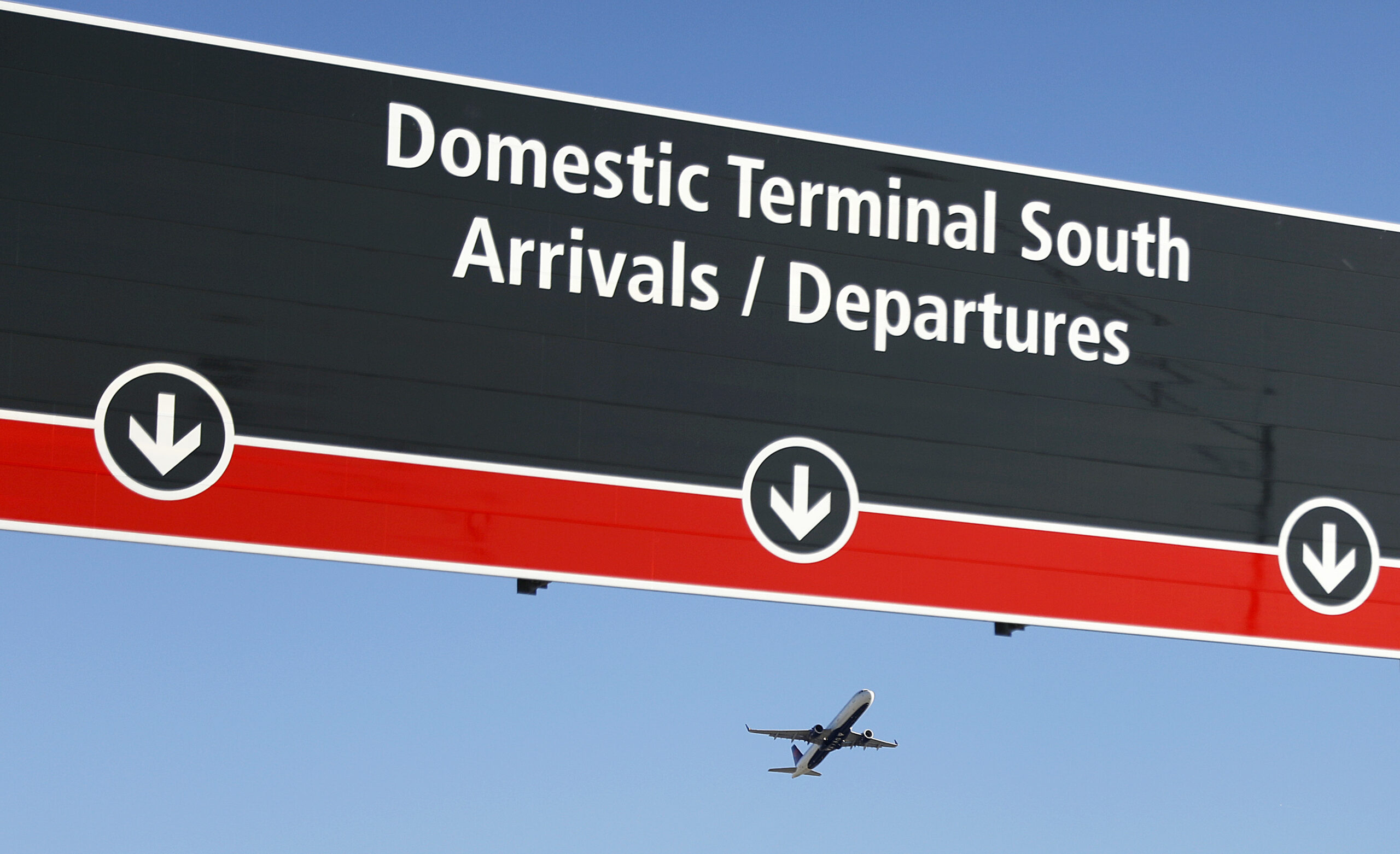How The Pandemic Creates A Chance To Track Airplane Air Pollution

With air traffic down dramatically because of the pandemic, researchers at Georgia Tech, with support from NASA, are using this time as a sort of natural experiment.
David Goldman / Associated Press
Like cars and trucks, airplanes release carbon dioxide that contributes to climate change and other pollutants that affect people’s health.
An opportunity has opened up to learn more about those emissions from planes. With air traffic down dramatically because of the pandemic, researchers at Georgia Tech, with support from NASA, are using this time as a sort of natural experiment.
“The airport has always been a hotspot,” said Jen Kaiser, an assistant professor in civil and environmental engineering at Georgia Tech. “It’s always been aspirational for me to go out there and start monitoring.”
Earlier this year, she set up instruments behind the state Environmental Protection Division’s offices, which are near Hartsfield-Jackson Atlanta International Airport.
She began tracking pollutants like Nox and formaldehyde, which contribute to the formation of ozone, when air traffic was low. She’s continued as more planes have returned to the sky.
“We started in early April,” she said. “My hope was that we would be back to normal by the summer, which seems really naive now.”
Ozone is bad for people’s health, especially children, seniors, people with asthma and people who are outside a lot. It affects the lungs. The good news is that the emissions from cars and trucks that contribute to ozone are going down across the country, Kaiser said.
“That’s attributed mostly to our ability to clean up cars,” she said.
To keep lowering those emissions, air traffic becomes more important, she said. Planes haven’t been cleaned up as much, though a handful of states are pushing for greater greenhouse gas emissions controls.
Kaiser’s research uses devices called Pandoras to essentially map air pollution near the airport. Part of the instruments are on top of a trailer, pointed at the sky. Like a prism, they measure light across different wavelengths and can point in different directions and at various altitudes. There was similar monitoring in Baltimore until earlier this month.
“We’re watching how much pollution there is as a different number of planes take off basically,” she said.
It will be complicated to figure out how the drop in air traffic directly affects people’s health, community health expert Robyn Bussey said, since the pandemic upends so many ways the public health benefits might play out, whether it’s people able to go to work or school, or people avoiding emergency department visits they might have otherwise made.
Still, she said, the airplane research will be useful data to have
“I think it’s a really huge data point that will be helpful to a lot a lot of larger conversations,” Bussey, who is a community health strategist for the Atlanta Regional Collaborative for Health Improvement and a senior research associate at the Georgia Health Policy Center, said.
Bussey emphasized, though, that the airport isn’t the only source of pollution in the area or potential contributor to health issues.
“There’s a lot of things going on,” she said. For instance, in College Park, there are neighborhoods with nice houses, good schools, generally higher incomes. “But then there are also lots of neighborhoods that have not been invested in.”
Lower educational attainment, lower-quality housing stock, lower incomes, less access to healthy food, and the legacy of racist redlining policies can all have compounding, intermingling effects on people’s health, she said. Let alone the fact that just untangling the sources of pollution can be tough.
Asher Mouat, a research assistant in Kaiser’s lab, said he hopes the work they’re doing can eventually inform policy.
“Chances like this are so few and far between,” he said. “More than ever, we need very strongly informed, backed up science, so that when it gets translated to policy, it’s irrefutable.”







